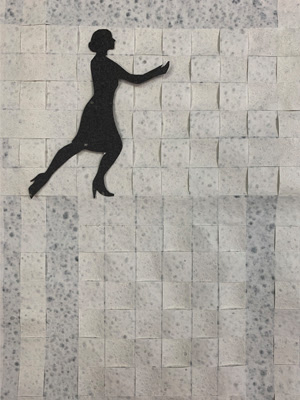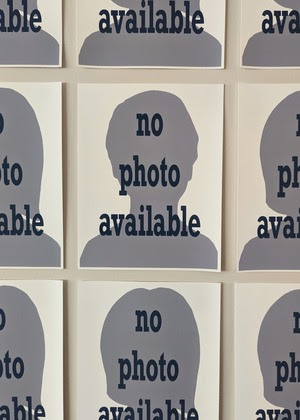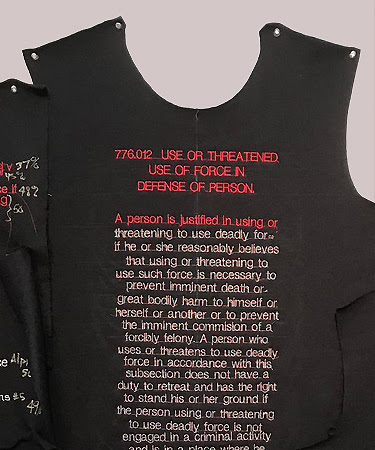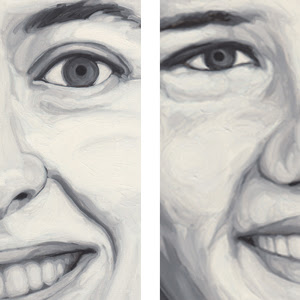
- This event has passed.
Form+Content Gallery: Rage. Remember. Renew.
December 9, 2023 @ 5:00 pm - 7:00 pm


Seven Memorials to Victims of Gun Violence

Linda Brooks
Betsy Dollar
Cory Favre
Carolyn Halliday
Tim Harding with Nina Martine Robinson
Patricia Olson
Seven artists have each chosen an incident of gun violence and created an installation to memorialize its victims. In these works, we acknowledge our rage at this senseless violence, remember its victims, and offer the opportunity to renew our commitment to eradicating gun violence.
When
December 7, 2023 – January 13, 2024
Gallery hours: Thursday, Friday, Saturday, 12:00 noon – 6:00 pm and by appointment
Free and open to the public
Public Reception
Saturday, December 9, 5:00 – 7:00 pm
Performance ritual by Kristina Fjellman at 5:30 pm
Free and open to the public
Artists’ Talk
Sunday, December 17, 1:00 pm in the Gallery
Moderated by Michal Sagar
Free and open to the publicWhere
Form+Content Gallery
Whitney Square Building
210 North Second Street, Suite 104, Minneapolis, MN 55401
One block north of Washington Avenue North and two blocks west of East Hennepin Avenue.
Parking is available on the street (metered) and in neighborhood parking ramps. See our website for additional parking options.
More Information
formandcontent@gmail.com | (612) 436-1151 | www.formandcontent.org
Curator’s email: patriciaolsonart@gmail.com
Artists’ Statements and Biographies
Katayoun Amjadi

Detail of installation,The Last Thing I Saw,
Protestor shot in the eye on September 20, 2022,
in Bandar Abbas, Iran. Media: medical eye patches,
thread, paper roll, vinyl wall text
Statement: A screen of 504 eye patches sewn together with black thread bisects the gallery wall into two sections. On each side of the curtain, part of a sentence is readable. The words are translated in English on the left, and in the original Persian (Farsi) on the right. The black screen of eye patches partially obscures the rest of the text underneath, while at the same time reveals blurred images of Iranians shot in the eye during the protests of the last year. One of the many Iranians wounded in the last year, was a young law student from the southern city of Bandar Abbas, Iran: Ghazal Ranjkesh. Ghazal was a 21-year-old protestor, shot in the right eye on September 20, 2022. Her story is one of many hundreds of protestors that have been wounded in this manner. The common perception is that targeting the eyes, breasts and buttocks of female protestors in particular, is intentional. The eyes are central to the idea of beauty in Iran, and have a mythical status in Persian culture. To target them is to strike at the core of femininity, to mutilate the essence of womanhood. I chose this event because I’m an Iranian woman. Violence to one woman’s body, is violence to all.
Biography: Katayoun Amjadi is an Iranian-born, Minneapolis-based artist, educator, and independent curator. In her work, she often considers the sociopolitical systems that shape our perceptions of Self and Other, such as language, religion, gender, politics, and nationalist ideologies. Amjadi blurs these boundaries and creates an off-balance, hybrid style that is slightly acerbic and a little bit tongue-in-cheek. Amjadi holds an MFA in ceramics and sculpture from the University of Minnesota Twin Cities and currently teaches in the Art Department at Normandale Community College in Bloomington, MN. She also teaches as a visiting lecturer at the Minneapolis College of Art & Design and the University of Minnesota. Her work has been exhibited in group and solo exhibitions nationally and internationally, including Minnesota Museum of American Art, St. Paul; Rochester Art Center; Weisman Art Museum, Minneapolis; Des Moines Art Center; Beijing Film Academy, China; Staatliche Akademie der Bildenden Künste Karlsruhe, Germany; and Haftsamar Gallery, Tehran. Selected fellowships include MCAD-Jerome Emerging Artist and Artist Initiative Grants from the Minnesota State Arts Board. Amjadi co-runs a studio arts building and maintains a small ceramics business in the Q.arma Building in the northeast Minneapolis art district.
Linda Brooks

Detail of installation: Tree of Life Synagogue
Massacre Memorial, Pittsburgh, Pennsylvania,
October 27, 2018, Cheshvan 18, 5779. Media:
adhesive-backed fabric, aqueous inkjet photograph,
pine-framed archival pigment prints, video projection
Statement: The premeditated murder of eleven Jewish worshipers belonging to three congregations that found their spiritual home at the Tree of Life Synagogue filled me with sorrow and frustration. As a Jewish person on alert, every incident of gun violence impacts me and contributes to a public trauma of terrorism in our country. This horrific act of violence and others like it proclaim a worsening tragic connection to histories of malicious, ongoing hate crimes against Jews and other marginalized people. As a memorial to the Jewish victims, the imagery references the inherent meanings of the tree of life in Judaism. It symbolizes the cycles of life, death, rebirth, and connections to heritage and history. The tree of life is often used to refer to the sacred Hebrew text within the Torah. The Torah is a source of Jewish origins, laws, stories, and guidance for being a good person. A life-affirming symbol, the tree of life is commonly embraced by many cultures and religions. Mother, enrolled member of the Citizen Potawatomi Nation, scientist, Professor Robin Wall Kimmerer in her book Braiding Sweetgrass asserts, “Old-growth cultures, like old-growth forests, have not been exterminated.”
Biography: The personal content of Brooks’ photographic practice is connected to larger cultural contexts. Individuals, scenarios, or objects are situated within relationships, experiences, and external circumstances. Over more than 40 years, she has worked as an artist, teacher, curator, and parent in the Twin Cities. She was a Hermitage Fellow for 2018-2020. Artist fellowships have been granted from the NEA, Rimon: The Minnesota Jewish Arts Council, Minnesota State Arts Board, and the McKnight Foundation. Her photographs have been included in more than 80 group exhibitions including Pier 24, San Francisco; Aperture, NYC; Hallwalls, Buffalo, NY; and the 5th Vienna Biennale, Austria. More than a dozen venues including Walker Art Center; the Cultural Center, Chicago; and the Sabes Jewish Community Center, MN, have installed solo exhibitions. Photographs are in the collections of The Bibliothèque Nationale de France, Minnesota Historical Society, George Eastman Museum, and The Brooklyn Museum. Young Voices: photographs of/by girls/teens/women, and the Jerome Hill Centennial Photography Exhibition 2005 are among the shows Brooks has curated. Images from between the birthdays are included in Reframings: New American Feminist Photographies. PROXIMITIES art, education, activism was published by TC Photo in late 2020.
Betsy Dollar

Detail of installation: Dancing the Year Away,
Lunar New Year Tragedy, The Star Ballroom
in Monterey Park, California, during the Lunar
New Year Celebration, January 21, 2023.
Media: handmade paper
Statement: On the evening of January 21, 2023, during the Lunar New Year Festivities in Monterey Park, California, a man entered the Star Ballroom and opened fire. He shot twenty dancers; eleven died, nine survived. The shooter fled to the Lai Lai Ballroom and Studio in Alhambra, north of Monterey Park where he was disarmed in a struggle at the door and fled. He was later discovered in his van where he took his own life. The shooter, Huu Can Tran, is the oldest mass shooter on record. He was Vietnamese. All the victims of the shooting were Chinese, Taiwanese, Vietnamese or Filipino, over the age of 55, most in their 60s and 70s. All were passionate about ballroom dancing. The shooter, a ballroom dancer himself, chose this ballroom as his target. He killed himself before any motivations could be found or questions could be answered. For me, this tragedy is tempered by the fact that these people were struck down doing something they loved. They all lived long, rich lives and left legacies of love and respect. As a paper artist it seems fitting to create a memorial of paper scrolls since their roots are in the Asian tradition.
Biography: Betsy Dollar grew up in a family of artists in the Chicago area. After high school she attended Minneapolis College of Art & Design for two years. Ultimately, she moved to Boulder, Colorado, where she completed both her BFA and MFA in printmaking and papermaking at the University of Colorado, Boulder. She stayed in Boulder where she had an audio-visual production company, taught art at every level, and worked as both a commercial and fine artist. In 2006 she left Boulder and returned to Minnesota, where she spent four years working as an artist, curating exhibitions, and teaching. In 2009 Betsy returned to Illinois to become the Executive Director of the Springfield Art Association. Betsy works primarily in handmade paper, printmaking, book arts, and with installations that are walk-through books made from her handmade papers. Her work is in both private and public collections in the United States.
Cory Favre

Detail of installation: Land of the Free, Homeroom
of the Brave; Sandy Hook Elementary School Shooting,
Newtown, Connecticut, December 14, 2012.
Mixed media installation
Statement: In less than five minutes on the morning of December 14, 2012, Adam Lanza entered the doors of Sandy Hook Elementary and murdered 20 students and six faculty members after first shooting his mother in the head while in her bed. Lanza died by suicide before police entered the building. As a mother of three, my oldest being in first grade (the same age as these children were at the time of their deaths), I am acutely aware of all the things that could come to harm them. Sending them off to school should not be on that list. It should be a safe place. I’m using recognizable imagery and everyday school items as a way to connect the horrific deaths of these children to what we put our children through currently, and what we expect them to process and deal with even when no gun is present. Firearm deaths are the number one cause of death in children in the United States as of 2020. This should be shocking to everyone, every single person, who purports to care about the wellbeing and safety of children. Yet, no significant legislation has been passed. We aren’t supposed to politicize these moments.
Biography: Cory Favre is a visual artist living and working in Roseville, Minnesota. She has a bachelor’s degree from Ball State University with focuses in Studio Art and Interior Design and is an alumna of the Women’s Art Institute Studio Intensive in 2019. She has served on the Board of Directors for the Women’s Art Resources of Minnesota, has been a long-time member of the Northeast Minneapolis Artists Association and North Suburban Center for the Arts. She has exhibited work both locally and regionally and has been the recipient of two Minnesota State Arts Board Grants as well as an Artist Initiative Grant in 2020 for her White Knuckled Project and a Creative Support Grant in 2022 for her series on motherhood called The Thick of It. Favre works primarily in drawing and oil painting, but has recently been experimenting with felt and embroidery in her work. Inspired by social justice issues and politics, particularly those issues facing women, she explores uncomfortable topics through bright, vibrant and fun imagery, using these techniques to draw the viewer into the conversation. Creating work this way, she is able to make these topics approachable and gives people a safe place to explore and think on their own experiences.
Carolyn Halliday

Detail of installation: Mourning Cloths: Hate Crime
at Tops Friendly Market, Buffalo, NY, May 14, 2022.
Media: handstiching on hand-made substrates of animal
membrane and used dryer sheets; cast animal membrane
Statement: My ongoing body of work, Mourning Cloths, began with the unexpected death of my brother. I was compelled to intuitively embroider random stitching on substrates I made of animal membrane. My use of animal membrane plays homage to the many early communities in the world that have devised some form of parchment from animal skin. I stitched with black thread to symbolize death and mourning. Additionally, after starting this work, I discovered through research that for centuries, women in the United States have used embroidery to mark mourning. This historic connection with others who embroidered as a way to mourn, grounds my commitment to textile tradition. My sensitivity to racism and individual oppression formed the basis for my choice of memorializing the hate crime at the ironically named Tops Friendly Market mass shooting. In addition to the black silk threads that I use on other mourning cloths, I have incorporated red threads. On the substrates I also incorporated soil pigments to reference dried blood. I repurposed the red threads that I removed from a swastika flag that hung in Cherbourg, France, during the WWII Nazi occupation. My father-in-law removed the flag on the day his army troop liberated the town.
Biography: Carolyn Halliday is a contemporary visual artist grounded in textile traditions. Ecological/evolutionary/
Tim Harding with Nina Martine Robinson

Detail of installation: Stand Your Ground: Trayvon
Martin Murder, Stanford, Florida, February 26, 2012.
Media: cotton knit sweatshirt fleece with rayon
embroidery thread
Statement: On the evening of February 26, 2012, a 17-year-old, black male was walking home from a neighborhood convenience store, having purchased a box of Skittles. After a brief confrontation with a neighborhood watch volunteer, Trayvon Martin was killed with a close-range gunshot to his chest. The white, male shooter, George Zimmerman, was eventually acquitted of the murder based on Florida’s Stand-Your-Ground Law. That evening Mr. Martin was wearing a dark hooded sweatshirt with the hood up. With the ensuing national news coverage, the “hoodie” became an iconic symbol of the young, black thug racial stereotype. A hoodie wearer, if black, could then become a target for preemptive gun violence. What was particularly alarming to me and so many others, above and beyond the horrific event claiming the life of an innocent teenager, was the legal sanction in Florida criminal codes that condoned the action Zimmerman took. The state’s Stand-Your-Ground Law actually creates an incentive to shoot first when encountering any situation where one, however subjectively, feels some vague sense of a threat. The NRA gun lobby, as part of its aggressive misinterpretation of the Second Amendment, has continued to promote these laws throughout the United States.
Biography: Tim Harding earned a BA with a Studio Arts major in 1973 at Hamline University with additional coursework at the University of Minnesota, Minneapolis College of Art & Design, and Macalester College. In1975 he established a silk screen print textile studio, Colorfield Fabrics. In 1983 he began a decades-long collaboration with his spouse/partner, Kathleen Harding, as Harding Design Studio, in the art-to-wear movement. His current studio practice, Tim Harding Studio, is focused on large-scale commissioned textile art wall pieces. He has received visual arts fellowships from the Minnesota State Arts Board, Arts Midwest, and the NEA. Harding’s work is represented in numerous museum and corporate collections.
Nina Martine Robinson is Harding’s studio manager. In her own artistic practice, Robinson creates site-specific textile installations utilizing discarded clothing to highlight her exploration into neurodiversity.
Patricia Olson

Detail of installation: The Montréal Massacre Memorial,
Montréal, Québec, Canada, December 6, 1989,
Media: oil on panel paintings with a shelf of ceramic bowls
holding glassine envelopes of morning glory seeds
Statement: On December 6, 1989, a man with a rifle walked into a classroom at the Ecole Polytechnique in Montreal. He divided the women from the men, released the men, and shot six women there. He prowled the building, searching out women, ultimately killing 14 women and wounding 12 other people before he committed suicide. He was heard to say, ”You’re all a bunch of feminists!” This particular tragedy affected me deeply. I wondered, in my rage: What could I do? The next year, on the first anniversary of what became known as the Montreal Massacre, I made 14 cards, one for each of the women killed, and mailed them to 14 people as a remembrance. I also sent morning glory seeds, asking the recipients to plant them in the spring as an act of renewal. On each anniversary through 1999, I made a memorial piece for each of the 14 women killed in Montreal and mailed them. In this version of the Montreal Massacre Memorial, I invite you to remember the lives and deaths of these 14 young women. If you are so moved, please take an envelope with morning glory seeds and plant them this spring as an act of remembrance and renewal.
Biography: Patricia Olson earned a BA in studio art “with distinction” at Macalester College in St. Paul. She received an MFA in Visual Studies from the Minneapolis College of Art and Design. She is a founding member of WARM, the Women’s Art Registry of Minnesota. Exhibitions include Art Speaks, a 170-year overview of Minnesota art and artists at the Minnesota History Center (2022); The House We Built: Feminist Art Then and Now at the Katherine E. Nash Gallery, University of Minnesota (2013). Her war memorial and protest piece, Operation Mopping Up, was purchased by the Minnesota Museum of American Art in 2005. Olson’s work is in the permanent collections of the Minneapolis Institute of Arts, Frederick R. Weisman Art Museum at the University of Minnesota, Minnesota Museum of American Art, St. Catherine University, Minnesota Historical Society and Walker Art Center. Olson is Professor Emerita at St. Catherine University. Beginning in 1999, she taught, with Elizabeth Erickson, the Women’s Art Institute, a summer intensive course for advanced women artists. In 2009 and in 2014, she and Elizabeth Erickson were honored as Changemakers by the Minnesota Women’s Press for their work with the Women’s Art Institute. Olson is currently a member of Form+Content Gallery in downtown Minneapolis.
Kristina Fjellman
Statement: Performance art asks the viewer to engage with artwork and concepts in a different way – instead of a static object in your space, you are confronted with another person. It’s a fleeting, collectively shared moment that cannot be duplicated or recreated no matter the similar components. In our current world where so much is recorded and on demand, it’s these ephemeral elements that I find special and important in performance. Over the years, gun violence has become commonplace in our daily lives. Despite the horrific act, we sigh and shake our heads, and then move on with our day. But the fabric of our society has still been torn. This performance is about acknowledging that this subject matter is difficult, but sharing the moment with others can bring us together, help us heal, and (hopefully) work to make change.
Biography: Kristina Fjellman is a visual artist and performer and is drawn to creative projects that combine both of these passions. She is the co-founding member of the theater troupe, The Winding Sheet Outfit, and an ensemble member of Sandbox Theatre. She is a graduate of the College of St. Catherine with a MAED in Art and Theater Education, has exhibited her sculpture in venues around the Midwest and Twin Cities, and was a recipient of a Jerome Fiber Art Project Grant for 2010-2011 at the Minnesota Textile Center.
Form+Content Mission Statement
Form+Content Gallery nurtures diverse artistic practice and thoughtful dialogue. We value art as a catalyst for critical thinking. We value integrity and the artistic process. We aspire to link personal expression to broader social contexts. Form+Content Gallery is dedicated to moving the definitions and practice of culture forward in new and lively ways.

